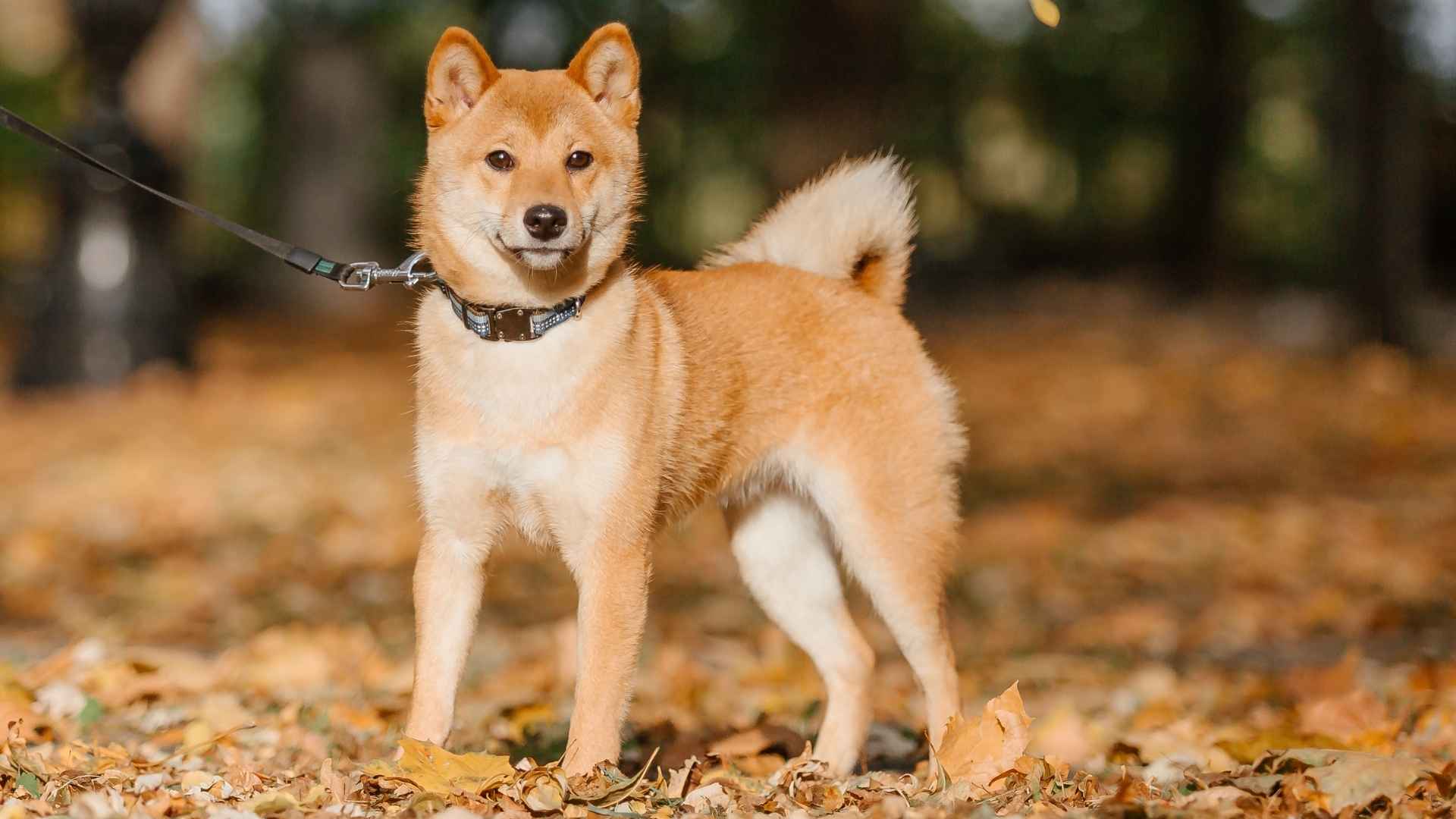Fluffy coats, pointed ears, and curled tails, Spitz dog breeds are instantly recognizable for their striking looks and arctic charm. Though the term “Spitz” doesn’t refer to a single breed, it encompasses a group of dogs that share similar physical traits and historical purposes. With appearances that often resemble foxes or wolves, these hardy canines were originally bred to assist humans in some of the world’s coldest environments, performing jobs like herding, pulling sleds, and guarding homes.
Originating from icy regions like Russia, Scandinavia, and North America, Spitz breeds boast insulating thick coats that helped them thrive in harsh winters. Their dense fur, expressive eyes, and perky ears aren’t just adorable, they’re functional. Most of these dogs are energetic and intelligent, requiring both physical activity and mental engagement to stay happy and healthy. While many still enjoy working roles, today they’re equally cherished as playful and loyal companions.
If you’re drawn to dogs with both rugged roots and fluffy appeal, Spitz breeds offer the perfect mix of beauty, brains, and boldness.
Spitz Dog Breeds
1. Keeshond
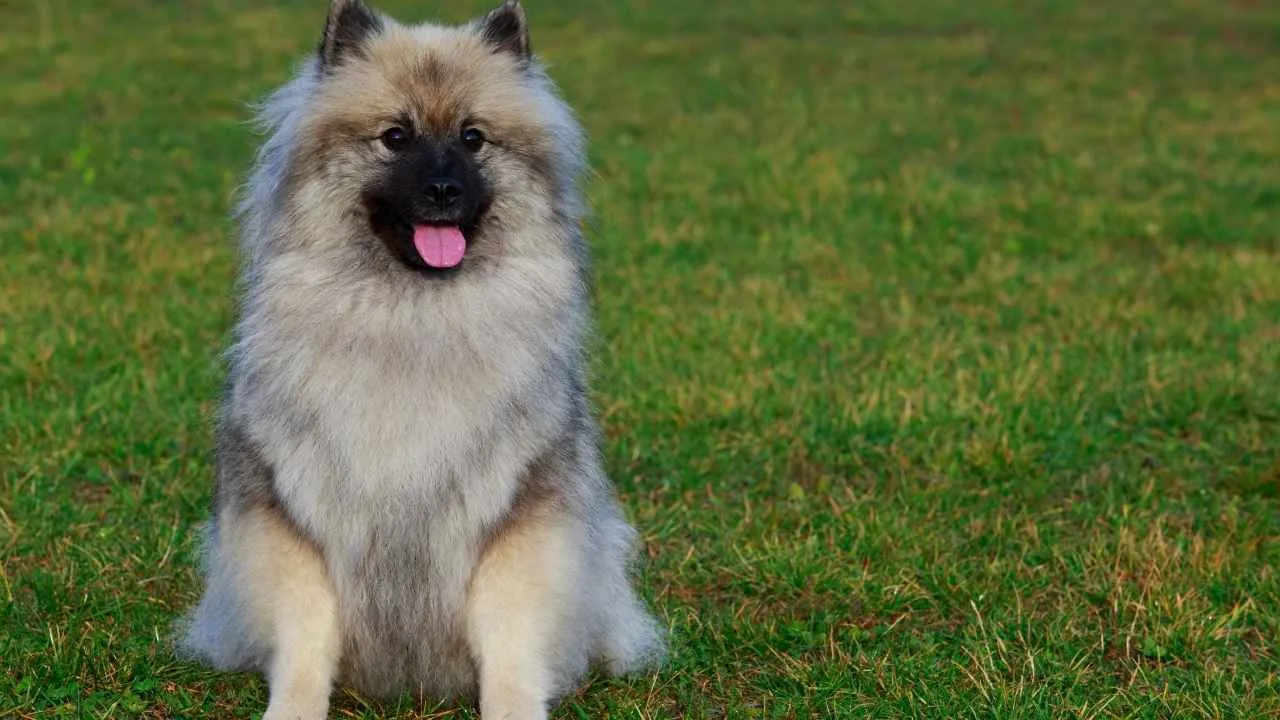
The Keeshond is a quintessential Spitz breed, with all the signature traits: a plush double coat, a plumed tail curled over the back, and an expressive, fox-like face. Historically found aboard Dutch canal barges, this medium-sized dog was both a loyal watchdog and a beloved companion.
Adaptable and affectionate, the Keeshond is particularly well-suited for families, thriving in homes with children and other pets. Its friendly, eager-to-please nature also makes it highly trainable and a joy to live with.
Unique Traits
Among Spitz breeds, this friendly dog breed stands out for one particularly endearing feature, its “spectacles.” These distinct markings around the eyes resemble a pair of glasses and highlight the dog’s intelligent, alert expression. The breed also boasts a luxurious mane-like ruff around the shoulders and chest, adding to its regal appearance.
Coats typically come in striking combinations of gray, black, and cream, and require regular grooming to maintain their full, fluffy splendor. According to the AKC, Keeshonden need routine grooming, but brushing their coats with a pin brush once a week is generally sufficient.
Fun Fact: The Keeshond was once a symbol of Dutch patriotism and remains beloved for its charm and loyal temperament.
2. Siberian Husky
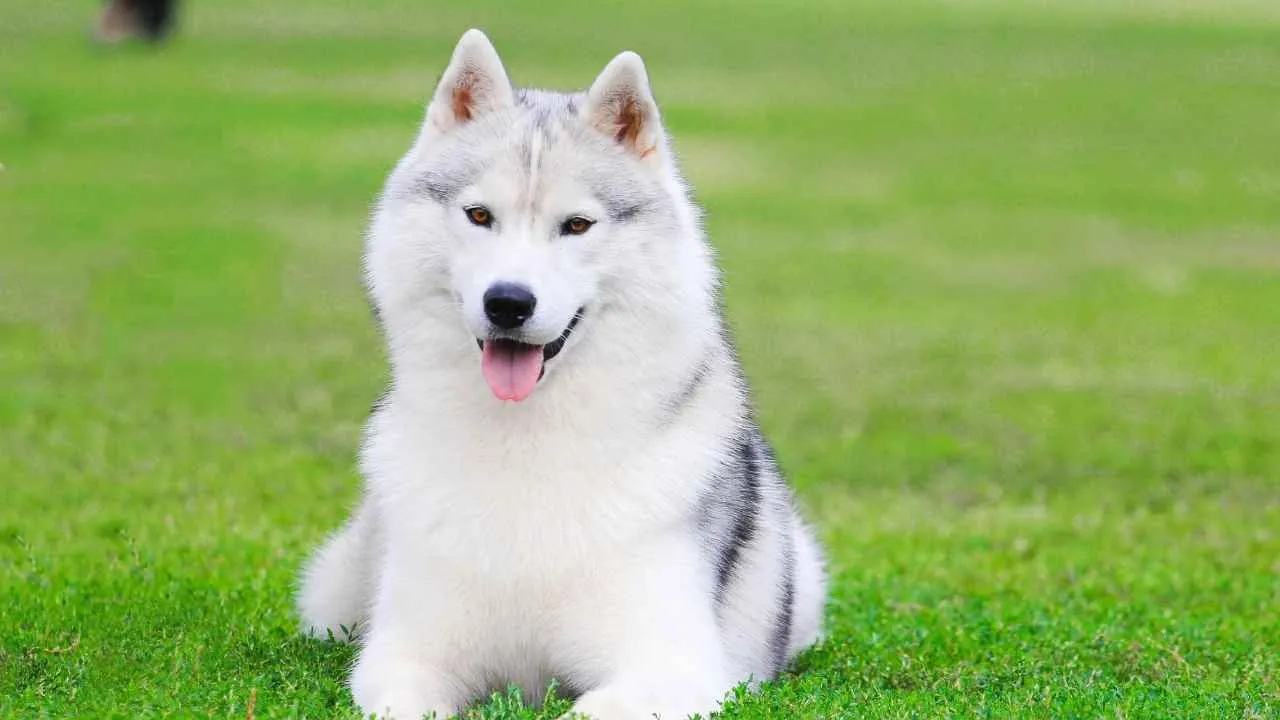
The Siberian Husky is instantly recognizable for its wolf-like appearance, piercing eyes, and unshakeable energy. Originally bred by the Chukchi people of Siberia, these athletic dogs were developed for long-distance sled pulling in brutal arctic conditions, combining stamina, speed, and companionship.
Huskies are loyal, playful, and often mischievous, traits that make them both charming and a bit of a handful. They’re not ideal for first-time dog owners unless you’re ready for an active lifestyle and consistent training.
Unique Traits
These loyal dogs possess a dense, soft double coat in shades of gray, tan, or black and white, often adorned with distinct head markings like masks or spectacles. Their almond-shaped blue or brown eyes, sometimes even one of each, add to their striking appearance.
Britannica notes that the Siberian Husky enjoys cold climates due to its dense coat, which needs regular brushing, particularly when it’s shedding. Despite their power, they move with effortless grace, a necessity for their role as sled dogs. Their high prey drive and need for mental and physical stimulation are part of their working dog heritage.
Fun Fact: In 1925, Siberian Huskies made history during the “Great Race of Mercy,” relaying serum across 674 miles to save Nome, Alaska, an event now honored by the Iditarod Trail Sled Dog Race.
3. Icelandic Sheepdog
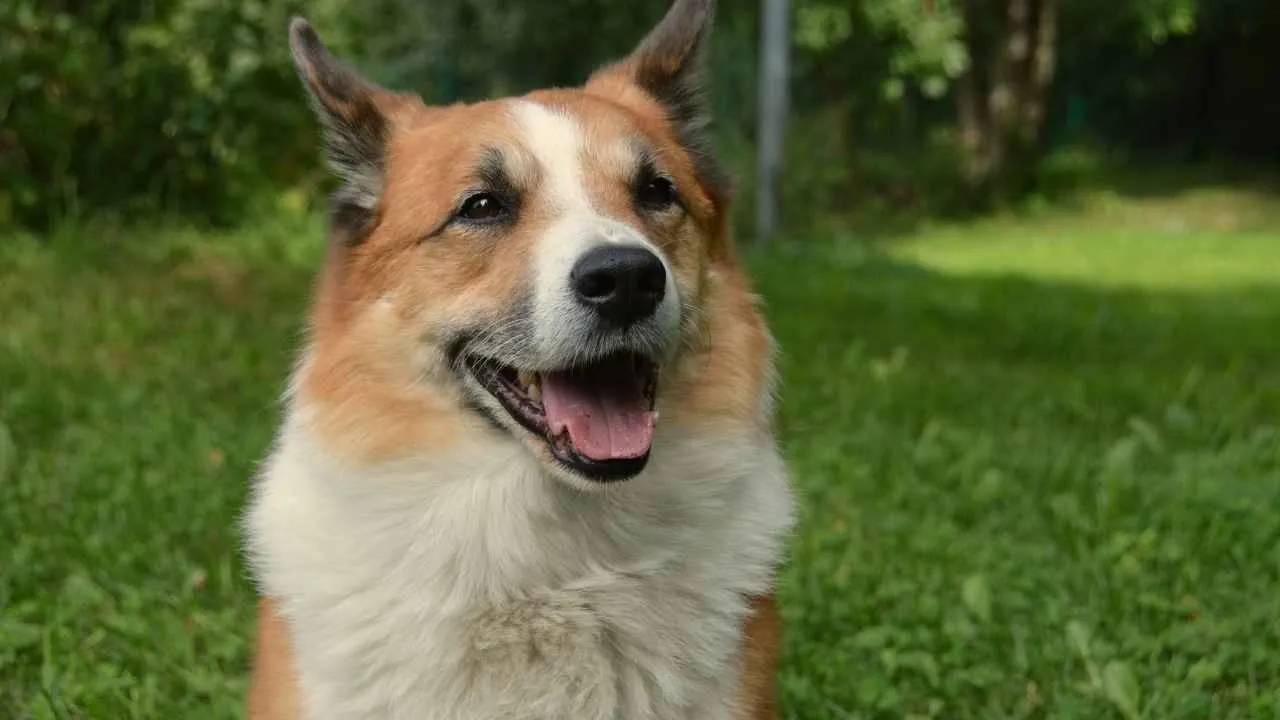
The Icelandic Sheepdog is Iceland’s only native dog breed, deeply rooted in the country’s Norse heritage. Brought to the island by Viking settlers, these dogs were bred for herding sheep, ponies, and cattle across rugged landscapes.
Despite their compact size, generally weighing between 25 and 30 pounds, they possess a big personality, full of enthusiasm and energy. Always eager to be part of the action, they thrive in active households where they can engage both physically and mentally.
Unique Traits
This Nordic Spitz breed features all the signature traits: a dense coat, pointed ears, and a curled tail, giving them a charming, fox-like appearance. Their outgoing nature and constant tail-wagging make them endearing companions, while their vocal, alert disposition ensures they don’t miss a thing.
PetMD suggests that Icelandic Sheepdogs are quick learners due to their intelligence and strong work ethic, and they are highly motivated and make wonderful family pets.
Fun Fact: The Icelandic Sheepdog is not only the country’s sole native breed but also descends from dogs brought over by Viking explorers more than a thousand years ago.
4. Pomeranian
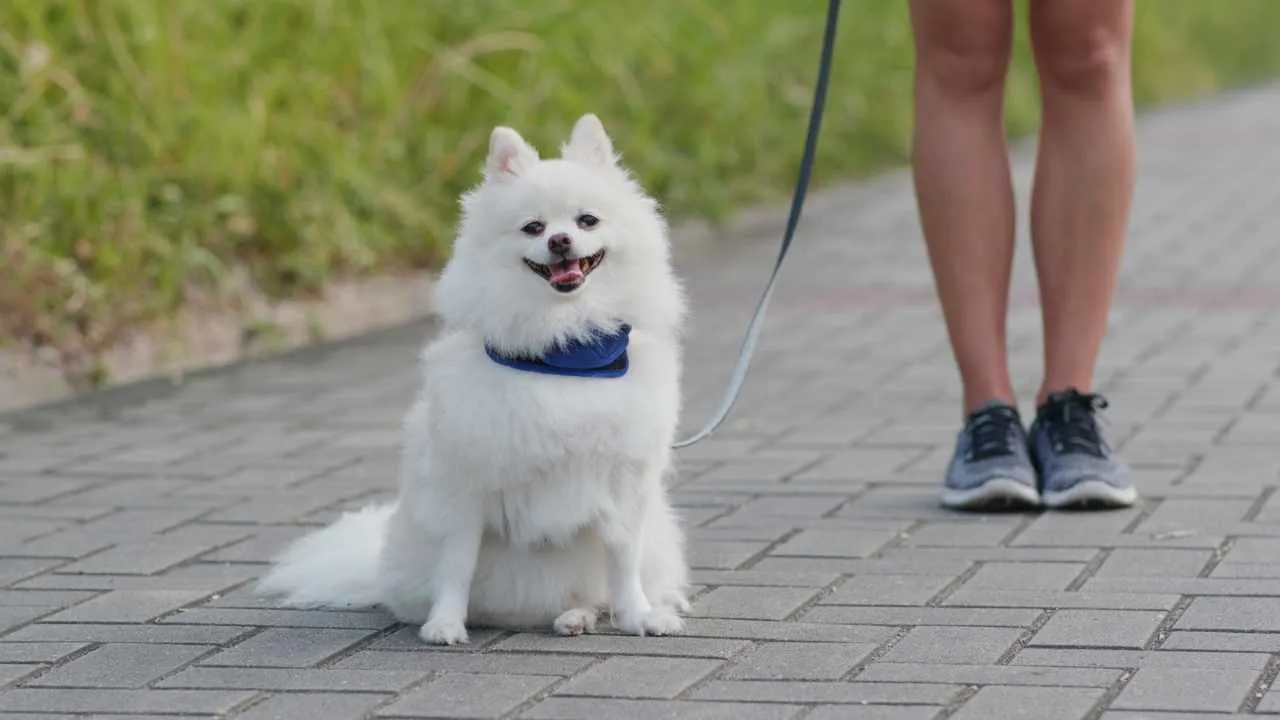
The Pomeranian may be the smallest member of the Spitz family, but what it lacks in size, it more than makes up for in personality. Purina describes the Pomeranian as not only cute in appearance but also charming in personality, constantly cheerful, and entertaining their human companions.
With its lively, animated demeanor and fox-like face, this toy breed carries all the signature Spitz traits, pointed ears, a thick, fluffy double coat, and a curled tail perched proudly over the back. Though tiny, Poms are fiercely loyal and often form strong bonds with a single person, making them ideal companions for those who enjoy doting on their dogs.
Unique Traits
Despite weighing under seven pounds, Pomeranians are bold, energetic, and surprisingly vocal. They love attention, enjoy learning tricks, and often shine in dog sports and therapy work. Their dense outer coat and soft undercoat give them a puffball appearance, but this also means they require regular grooming.
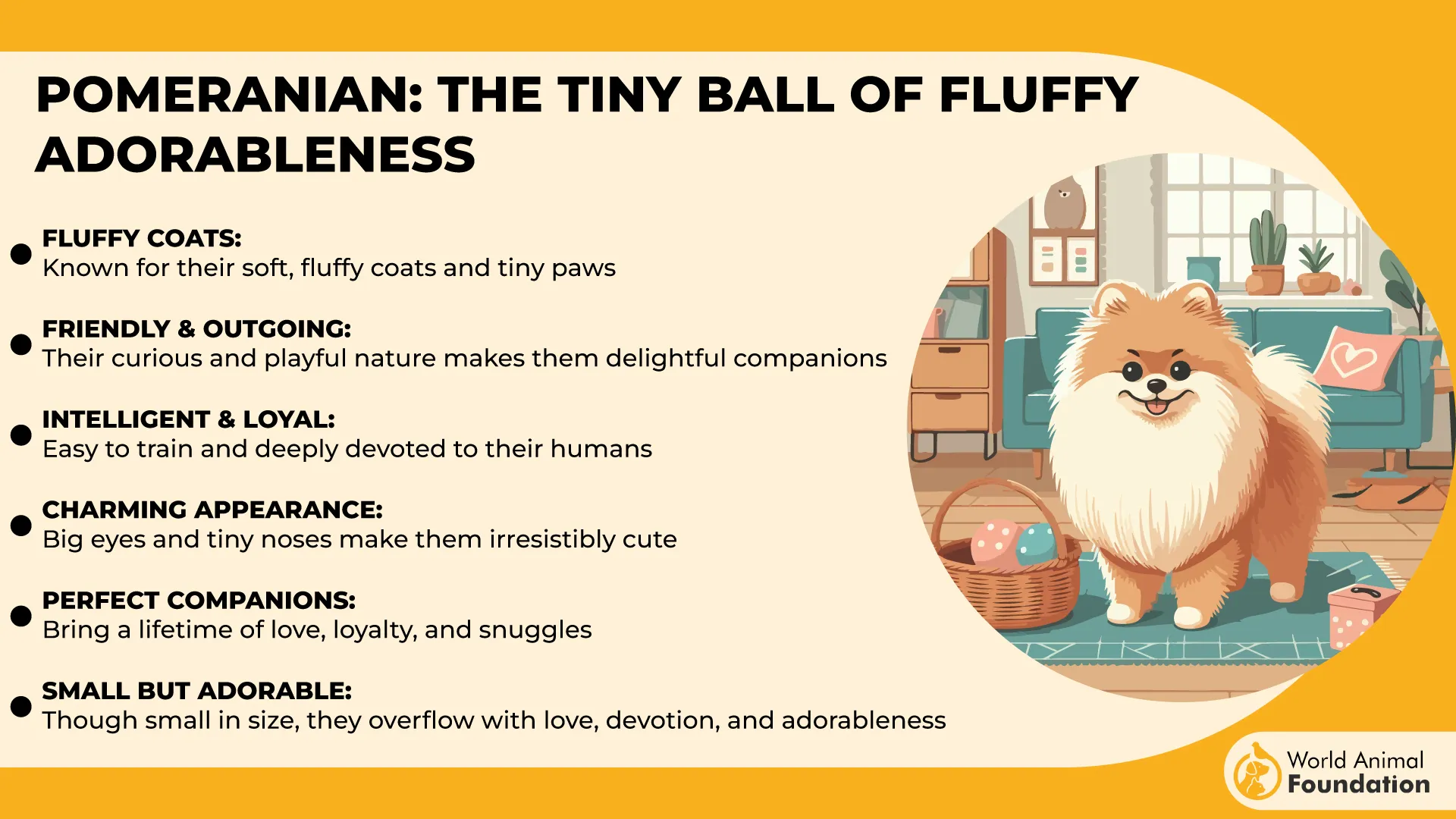
These confident little canines are natural watchdogs, quick to alert their humans to anything out of the ordinary, sometimes even when there’s nothing!
Fun Fact: The Pomeranian is descended from large Arctic sled dogs and was a favorite of royals like Queen Victoria and Marie Antoinette.
5. Samoyed
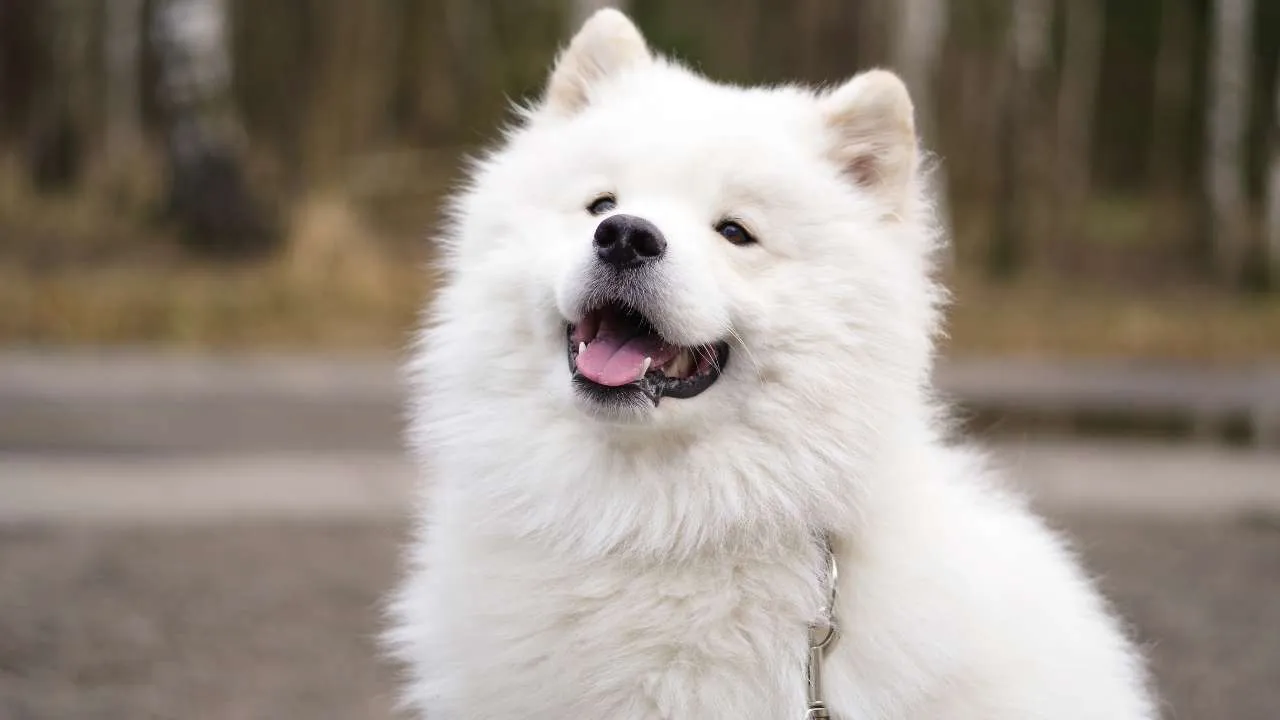
The Samoyed combines function with beauty in one fluffy, snow-white package. Bred by the Samoyedic people of Siberia, these dogs were originally developed to herd reindeer, pull sleds, and serve as all-around helpers in arctic conditions.
Also known as “Sammies” or “Bjelkiers” in parts of Europe, WebMD states that these dogs are highly active and friendly, thriving on affection and companionship. Their boundless energy and affectionate temperament make them a perfect fit for active households.
Unique Traits
What truly sets the Samoyed apart is its iconic “Sammy smile”, a curved mouth shape that prevents drool from freezing in frigid temperatures. Their thick double coat consists of a coarse outer layer and a soft, woolly undercoat, designed for extreme cold resistance.
While breathtakingly beautiful, this coat requires regular brushing to manage shedding and keep it healthy. Sammies are known for their intelligence, playfulness, and tendency to demand attention, qualities that make them both entertaining and endearing.
Fun Fact: The Samoyed’s famous grin isn’t just cute, it’s a functional trait that helped keep icicles from forming on their faces during harsh Siberian winters.
6. Shiba Inu

The Shiba Inu is a classic example of a Spitz dog breed, compact, spirited, and visually striking. Originating in Japan, this agile and muscular dog was initially bred for hunting small game in mountainous terrain.
Today, the Shiba has become Japan’s most popular companion breed, known for its loyalty, self-assurance, and unmistakable charm. Though affectionate with their families, Shibas are independent thinkers and often display a stubborn streak, making early training and socialization especially important.
Unique Traits
One of the Shiba Inu’s most recognizable features is its fox-like appearance: a dense double coat in red, black, and tan, or sesame, paired with pointed ears and a curled tail. Their alert expression and confident stance further accentuate their bold personality.
While intelligent and generally clean, they can be aloof with strangers and are known for their poor recall, so leash-free adventures aren’t ideal. Despite their independence, they form deep, enduring bonds with their owners.
Fun Fact: These hunting dogs are easy to housebreak and often groom themselves like cats, making them unusually tidy for a dog breed.
7. Chow Chow
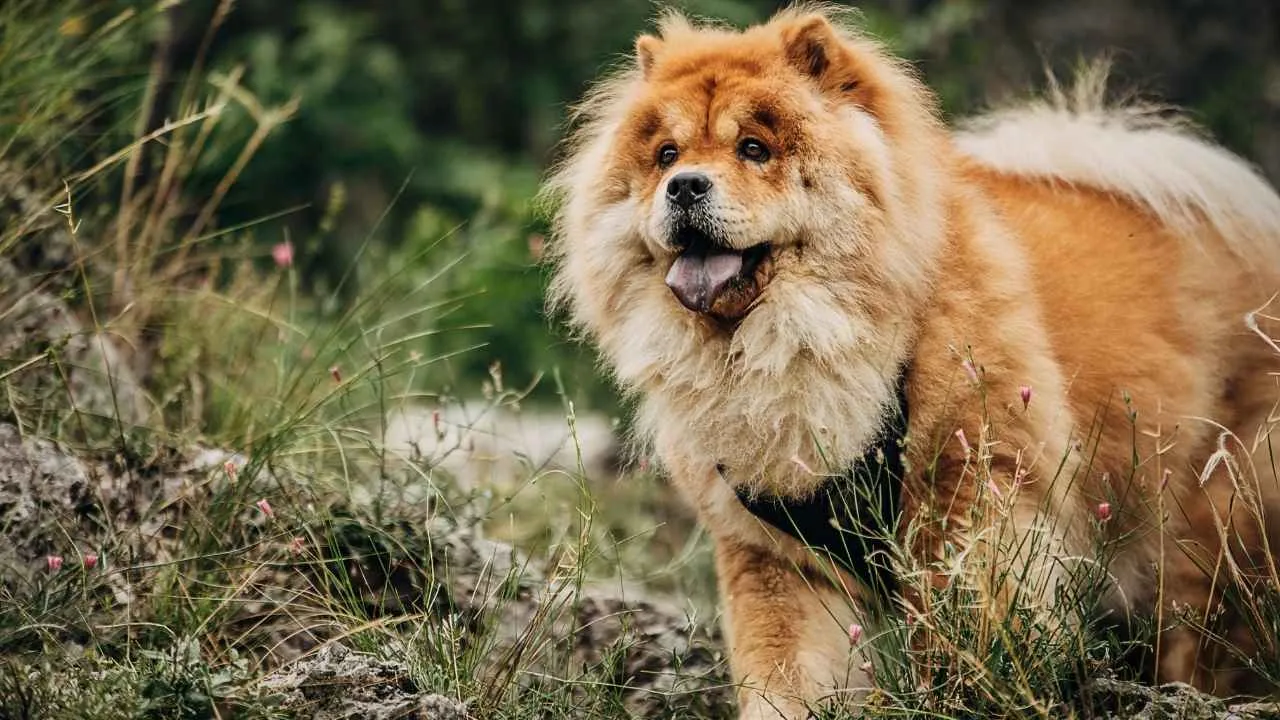
The Chow Chow is one of the oldest known Spitz-type breeds, with roots tracing back to ancient China as early as 206 B.C.E. Originally bred for multiple roles, including guarding, hunting, and hauling, this dignified dog has retained its noble and independent demeanor through the centuries.
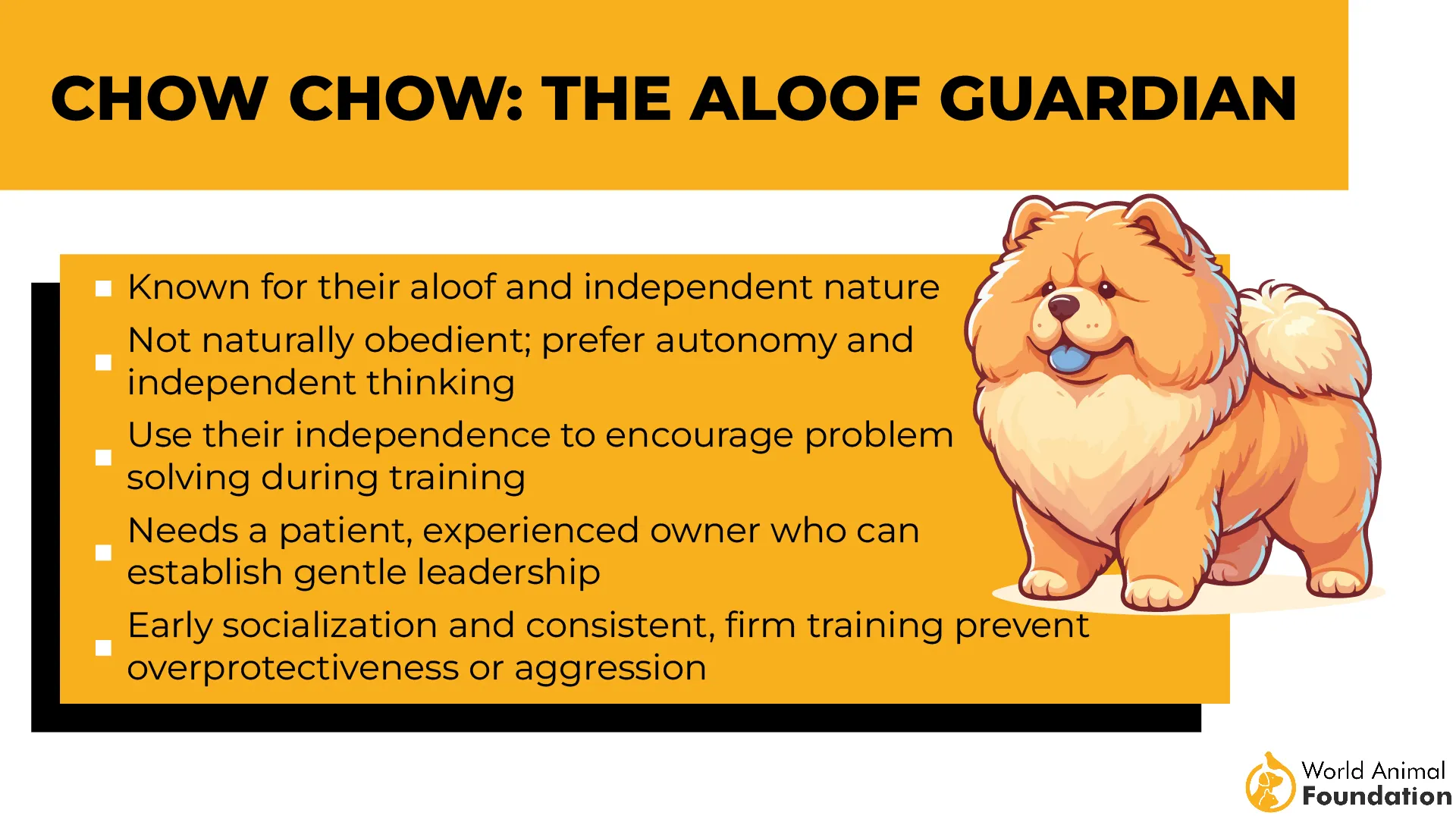
While they can appear aloof or reserved with strangers, Chow Chows form deep, loyal connections with their families, offering calm companionship and quiet devotion.
Unique Traits
What sets this guard dog apart is its striking appearance and almost cat-like behavior. Most notable is its signature blue-black tongue, an uncommon trait in the canine world. The breed’s thick mane-like neck ruff gives it a lion-like silhouette, and its wrinkled face adds to its regal, contemplative expression.
Their dense coat comes in rich hues like cream, red, fawn, blue, and black. Though independent, they’re fastidiously clean and often easier to housebreak than many other breeds.
Fun Fact: The Chow Chow is believed to be one of the very first Spitz breeds in existence, with a lineage dating back more than 2,000 years.
8. Alaskan Malamute
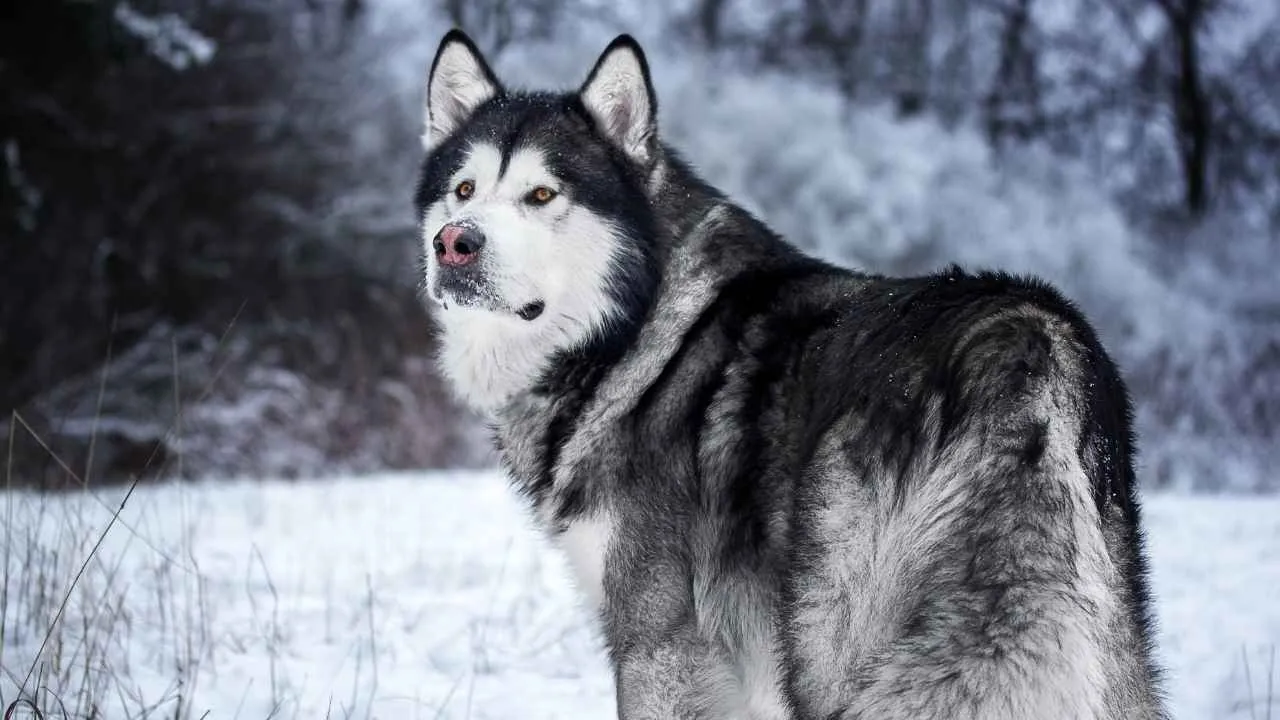
The Alaskan Malamute is as powerful as it is affectionate. Originally bred for hauling heavy loads across frozen landscapes, this strong, sturdy dog hails from Alaska and is one of the oldest sled dog breeds in existence.
Despite their impressive strength and high energy levels, these affectionate dogs are incredibly loving and thrive when included as part of the family. Their playful yet dignified nature makes them ideal companions for active households.
Unique Traits
These active dogs are known for their dense, weather-resistant double coat, which comes in striking shades of white, gray, black, brown, or red. Their expressive almond-shaped eyes and bushy, curled tails reflect their Spitz lineage. These dogs are incredibly social and friendly, so much so that they rarely make effective watchdogs.
However, they do possess a strong-willed, independent streak, which means early leadership training is key. Regular, vigorous exercise is a must to keep their working instincts satisfied and their bodies healthy.
Fun Fact: Despite their imposing size and strength, Alaskan Malamutes are famously friendly and often prefer snuggles over suspicion, making them surprisingly gentle giants.
9. Norwegian Buhund
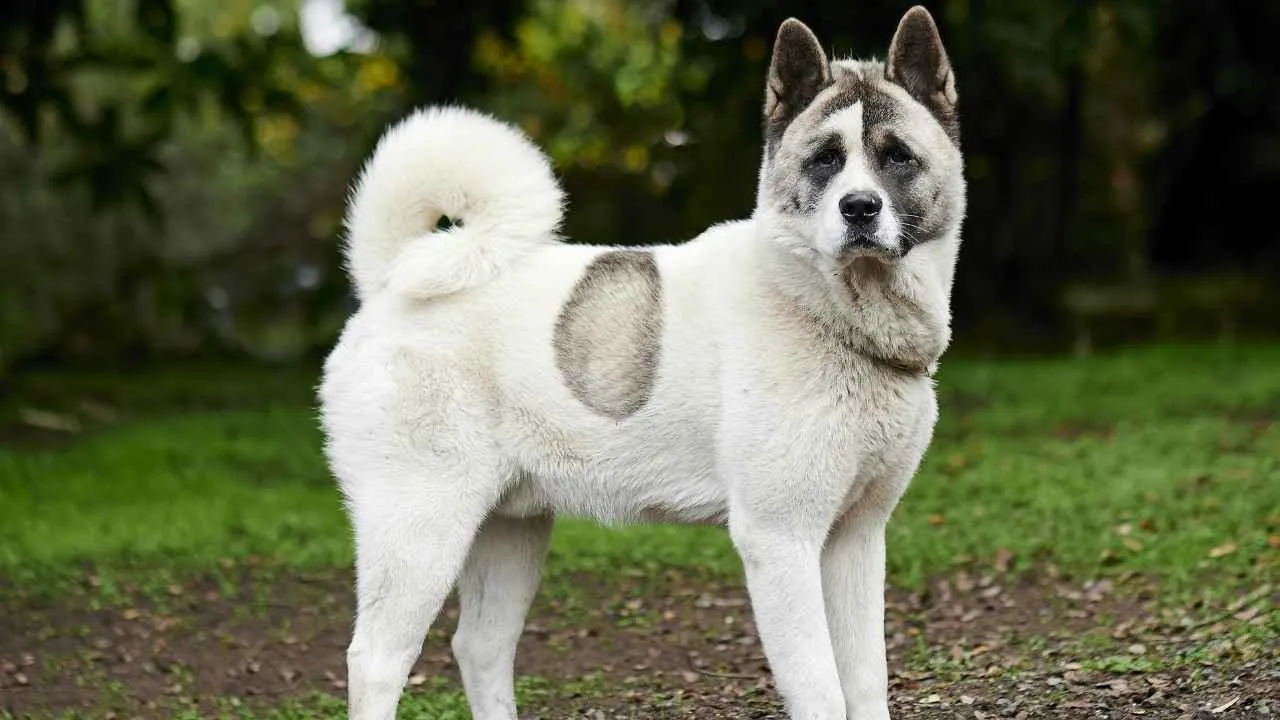
As one of the original Spitz-type breeds, the Norwegian Buhund carries a legacy that traces back to Viking times. This energetic, all-purpose farm dog once served as a loyal herder, guardian, and companion to Norse settlers. Today, the Buhund still thrives in active households, where its intelligence and enthusiasm shine.
Naturally friendly and affectionate, these companion dogs form strong bonds with their families and love to be involved in daily life. They form loving family dogs. Their cheerful nature is paired with a keen alertness, making them vocal watchdogs without aggressive tendencies.
Unique Traits
This herding dog has a distinct double coat built for both utility and charm. Its outer layer is thick and smooth, while the undercoat is soft and dense, offering protection in harsh weather. A longer ruff of fur graces the neck, chest, and thighs, adding to its rugged appeal.
Common coat colors include wheaten tones or solid black. Agile and quick-thinking, Buhunds excel when given mental challenges and physical activity.
Fun Fact: Norwegian Buhunds often traveled with Vikings and are among the oldest known Spitz breeds to work side-by-side with humans on farms and voyages alike.
Conclusion
Spitz dog breeds are more than just fluffy faces and curled tails, they’re deeply rooted in history, purpose, and personality. From the charming Keeshond with its iconic “spectacles” to the spirited Norwegian Buhund, these distinct spitz dog breeds have adapted from ancient working roles to beloved family companions. Known for their pointed ears, dense coats, and lively energy, most spitz breeds thrive in environments that match their intelligence and need for stimulation. Whether guarding, herding, or simply playing, these dogs bring loyalty and charm in equal measure.
Beyond the breeds discussed, many spitz breeds like the Finnish Lapphund, German Spitz, and other dogs in this category also possess the same resilience and beauty. The American Kennel Club recognizes a variety of these spectacular spitz breeds, showcasing their diversity and appeal. While spitz breeds can differ in size, temperament, and coat type, one thing remains constant: their ability to form strong bonds and bring joy to the lives of those who welcome them home.


